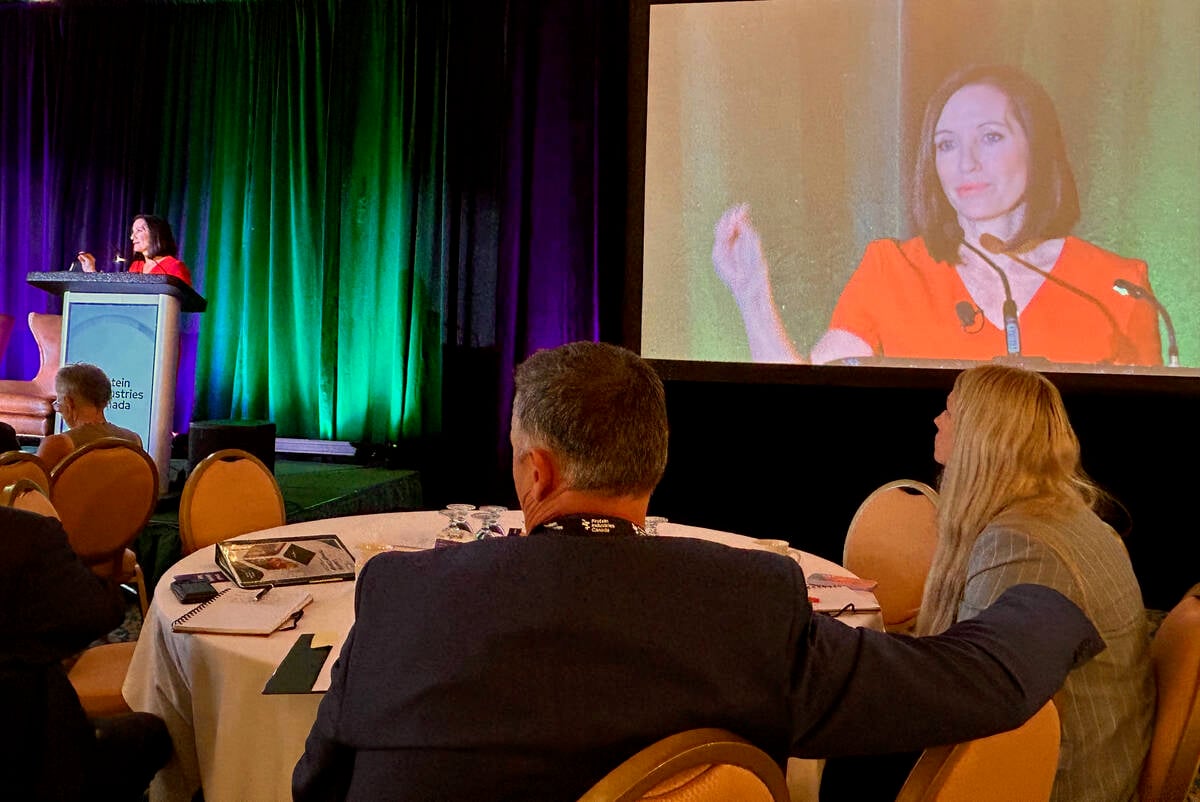Dave Solverson has stepped down as CCA president but said retirement doesn’t mean he will step away from beef politics
A desire to be involved in beef politics took Dave Solverson from his ranch at Camrose, Alta., to the presidency of the Canadian Cattlemen’s Association.
He completed his two-year term last March and this spring he was named to Alberta’s top 50 most influential people of 2016 list by Alberta Venture magazine.
“To be recognized as influential, well, a lot of things happened under my term of president but it was because I was with a very influential organization,” he said during an interview at the Canadian Beef Industry conference held in Calgary Aug. 9-11.
Read Also

Canada told trade crisis solutions in its hands
Canadians and Canadian exporters need to accept that the old rules of trade are over, and open access to the U.S. market may also be over, says the chief financial correspondent for CTV News.
Solverson works with his brother, Ken, and daughter, Joanne, to run Woodwinds Ranch, which includes about 800 commercial cows and a large grain farming operation. The farm has been in his family since the 1940s.
The family was involved in the purebred Hereford business for almost 30 years. By the early 1980s, they had a chance to expand the land base and switched to a commercial operation.
“I got tired of the politics of the purebred side, which is kind of ironic because I got involved with beef politics,” he said.
He was elected as a delegate to Alberta Beef Producers in the mid 1990s and then sat out for a few years.
He missed being in the inner circle and joined again and was elected to the Canadian Cattlemen’s Association in 2005.
At the same time, the family expanded the herd during the height of the BSE crisis when markets collapsed. They opted to buy bred cows for $600 and sell off the heifers.
“It was a different business model then. You buy a bred cow for 600 bucks and you could sell a feeder heifer for $1,000,” he said.
When he joined the CCA he was interested in trade and beef politics but he had no plans to climb the leadership ladder.
“I had no aspirations to be president. I seemed to gain the respect of my colleagues and I was a long ranking Alberta director.”
It was a proud period of his life, in which he travelled to Ottawa, Washington, D.C., and Asia while representing the Canadian industry.
“That is two years of my life that was amazing,” he said.
It was also during his tenure that the long standing dispute over mandatory country-of-origin labelling was resolved.
He was also fortunate to be in office during a period of record-setting cattle prices that raised optimism throughout the industry.
“The incredible run up in prices was all in my term,” he said.
Producers join these organizations as volunteers and gain considerable confidence as they meet prime ministers and other influential people in the trade.
“I never was intimidated by politicians. I always respected them as people and doing the best job they can but I did not hold them in such esteem that I couldn’t talk to them,” he said.
He will continue to serve as past-president but eventually he faces retirement and heads back to the ranch as an elder statesman in his industry.
“Trade really interests me and if there is a place for me to once again represent the beef industry, I would help,” he said.
He is also looking at the future where his daughter, an agricultural lender and young mother, is taking a bigger role at the ranch.
His idea of retirement may be to scale back the cow herd of Hereford, Simmental and Angus cows.
“I think I will retire with a couple hundred cows. To downsize from 800 would seem pretty easy,” he said.
Meanwhile, when it comes to the issue of young people taking over in the beef sector, Solverson said in his community he has seen more young farmers involved in the grain side and more involvement with purebred cattle.
“It gives me some good feeling when I go to any purebred event because the seedstock industry seems to have done a better job of engaging their young people,” he said.
While with ABP he was finance chair and served as the Canadian Agri-Food Trade Alliance representative. He has served as chair of the CCA animal care and foreign trade committees.

















